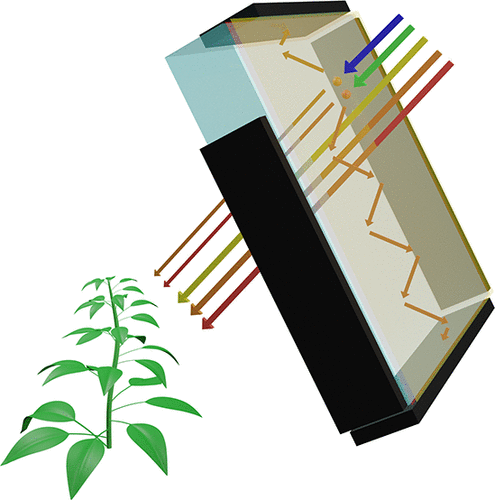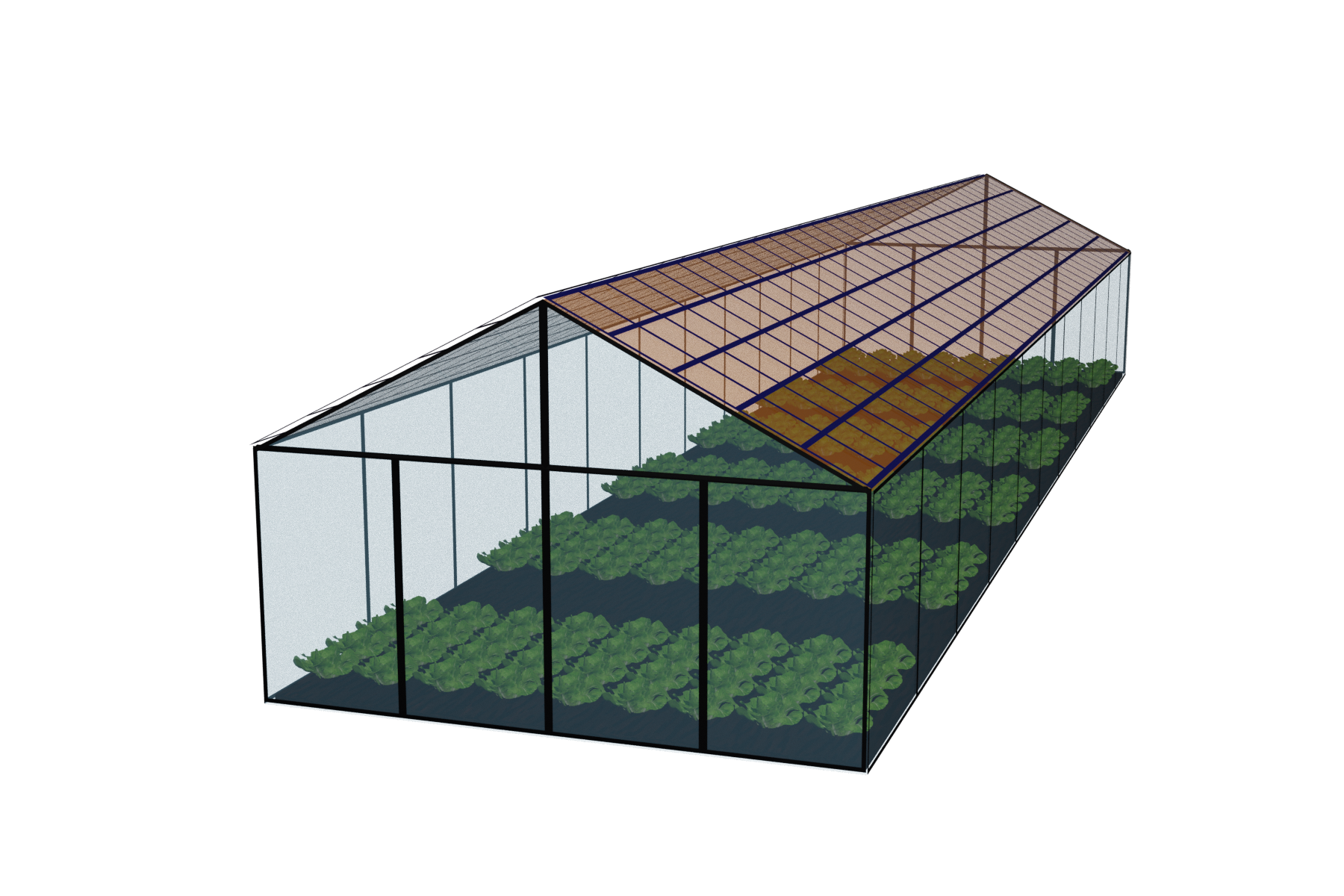With the growing global population, there is a rising need for both renewable energy generation and increased food production to sustain larger communities. Yet, due to climate change stressors, the decreasing amount of arable land strains food production systems. Greenhouse cultivation provides one solution to this issue, as the closed environment protects crops from adverse environmental conditions. However, greenhouses consume significant amounts of energy for heating, leading to high operational costs and additional greenhouse gas emissions from traditional heating methods.
Agrivoltaic systems promote dual land use by strategically combining photovoltaics (PV) and agriculture. One application space is in greenhouses, where PV glazing can offset or completely meet high energy demands from greenhouse operations. However, fully opaque PVs generate electricity at the expense of light transmission, thereby eliminating crop photosynthesis. Luminescent solar concentrators (LSCs) have received growing interest in the agrivoltaics community as their higher transparency can benefit crop yield while concentrating light onto small-area PV cells. Integrating LSCs into greenhouse roofs presents a promising opportunity to provide clean energy without significantly compromising crop yield; however, the LSC design considerations that balance transmission and electricity generation need to be better understood.
The Kortshagen Group has developed models to better understand LSC design in the context of agrivoltaic systems, namely greenhouses. We approach the issue from a system perspective by combining our expertise in nonthermal plasma synthesis of nanomaterials for light management strategies with detailed models of HVAC systems and power generation from PV cells. With this comprehensive model, we can better understand and design LSCs for agrivoltaic greenhouses.
This work is sponsored by the University of Minnesota and the Minnesota Environment and Natural Resources Trust Fund.
Related Publications
"Energy and Thermal Performance Analysis of Quantum Dot Luminescent Solar Concentrators in Greenhouses," Yaling Liu, John Keil, Vivian E. Ferry, and Uwe R. Kortshagen, Adv. Sustain. Syst., 2300107 (2023). doi: 10.1002/adsu.202300107 Featured on the Back Cover
"Bilayer Luminescent Solar Concentrators with Enhanced Absorption and Efficiency for Agrivoltaic Applications," John Keil, Yaling Liu, Uwe Kortshagen, and Vivian E. Ferry, ACS Appl. Energy Mater., 4(12), 14102-14110 (2021). doi: 10.1021/acsaem.1c02860
“Poly(Methyl Methacrylate) Films with High Concentrations of Silicon Quantum Dots for Visibly Transparent Luminescent Solar Concentrators,” Samantha K.E. Hill, Ryan Connell, Jacob Held, Colin Peterson, Lorraine Francis, Marc A. Hillmyer, Vivian E. Ferry, and Uwe Kortshagen, ACS Appl. Mater. Interfaces, 12(4), 4572–4578 (2020). doi: 10.1021/acsami.9b22903


